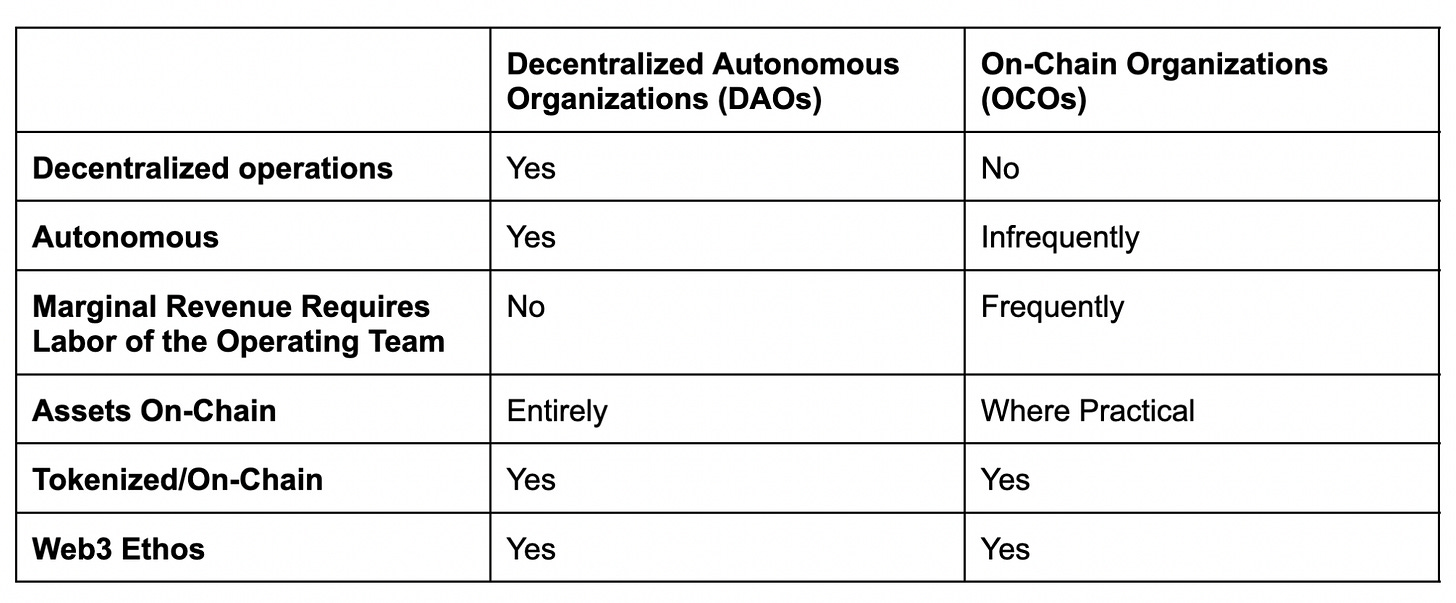What makes a DAO a DAO
If you aren't decentralized & autonomous-- you're something else.
First, a DAO must meet all of the criteria of an On-Chain Organization (OCO): it must be on a blockchain and must have the ethos of a web3 organization. Rather than simply having most assets on-chain, it must have all assets on-chain. If there are off-chain assets (i.e. traditional USD bank account), then assumptions of autonomousness will not hold since the DAO cannot programmatically guarantee how those assets will be treated in different situations.
To be “decentralized”, it means that token distribution is spread such that individuals and small clusters of individuals cannot have complete influence over the protocol. For example, a token with millions of holders and 50% voting threshold is not decentralized if a small team owns 51% of the tokens.
To be “autonomous”, it means that it must be a protocol that can operate without the interference of the developers. A DAO also generates marginal revenue automatically. It is important to note that a DAO may have human-labor (developers) working on v2, v3 of a protocol, but after the DAO votes to implement their upgrades, the code must work without developer interference. If human labor is required for generating incremental value (i.e. normal operations), it is not autonomous. A DAO may generate revenue through the usage/efforts of customers, who are usually also tokenholders.
To be clear, I’m not interested in splitting hairs about definitions. People may disagree with some of my line items. That’s fine– but we need to arrive at the same conclusion that there are great web3 organizations being built that are neither decentralized nor autonomous… and many are going to crush it.

